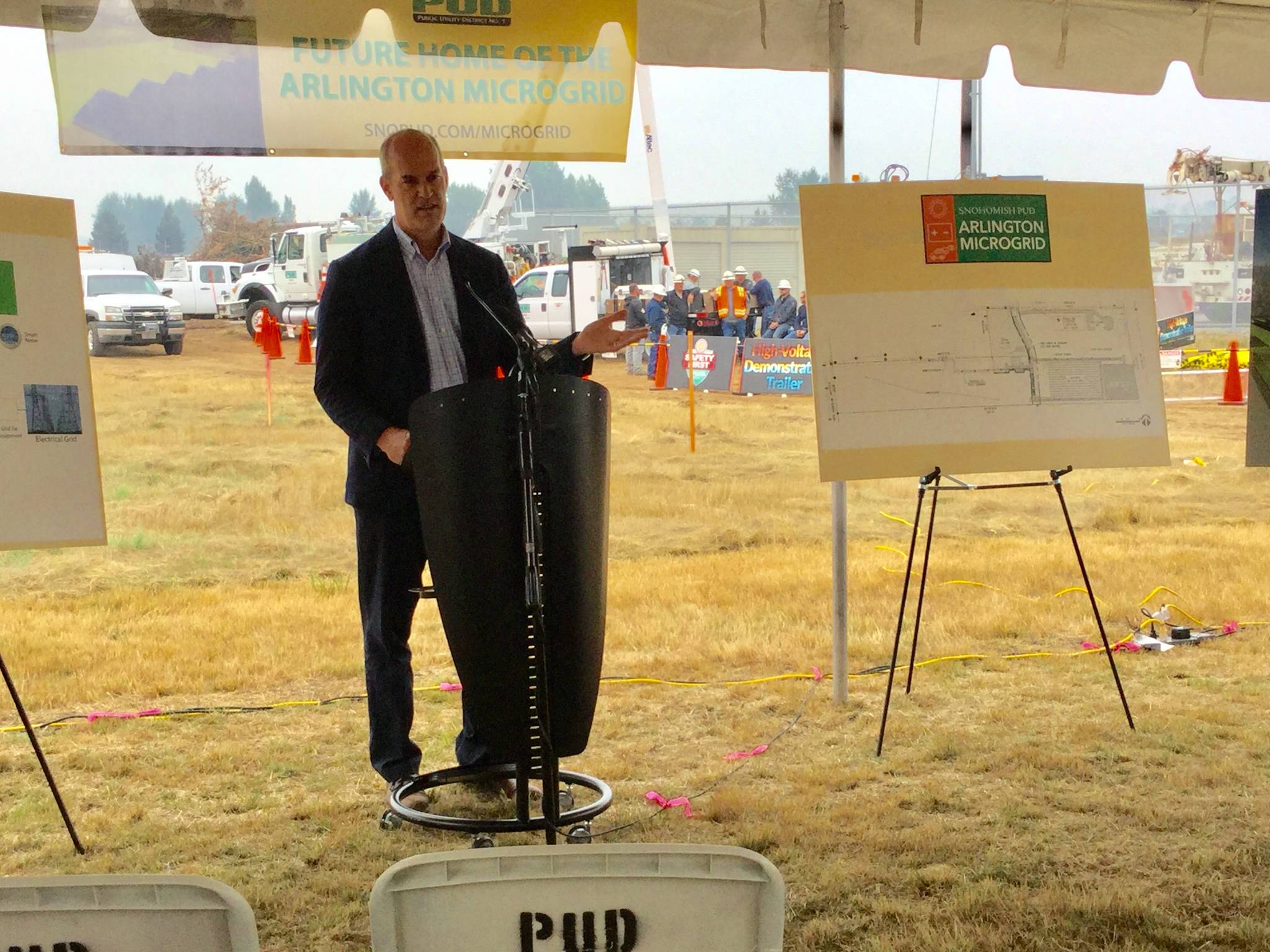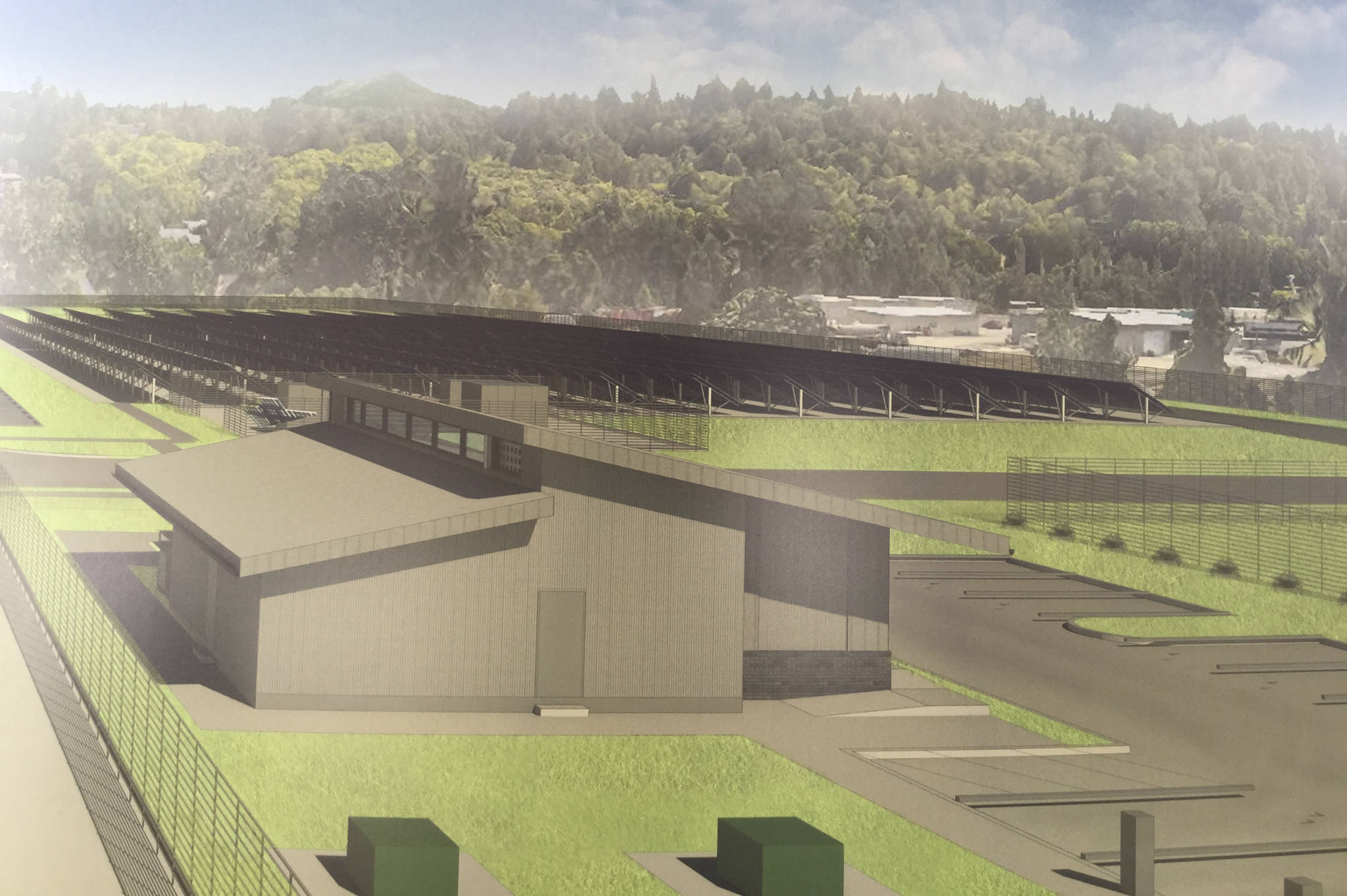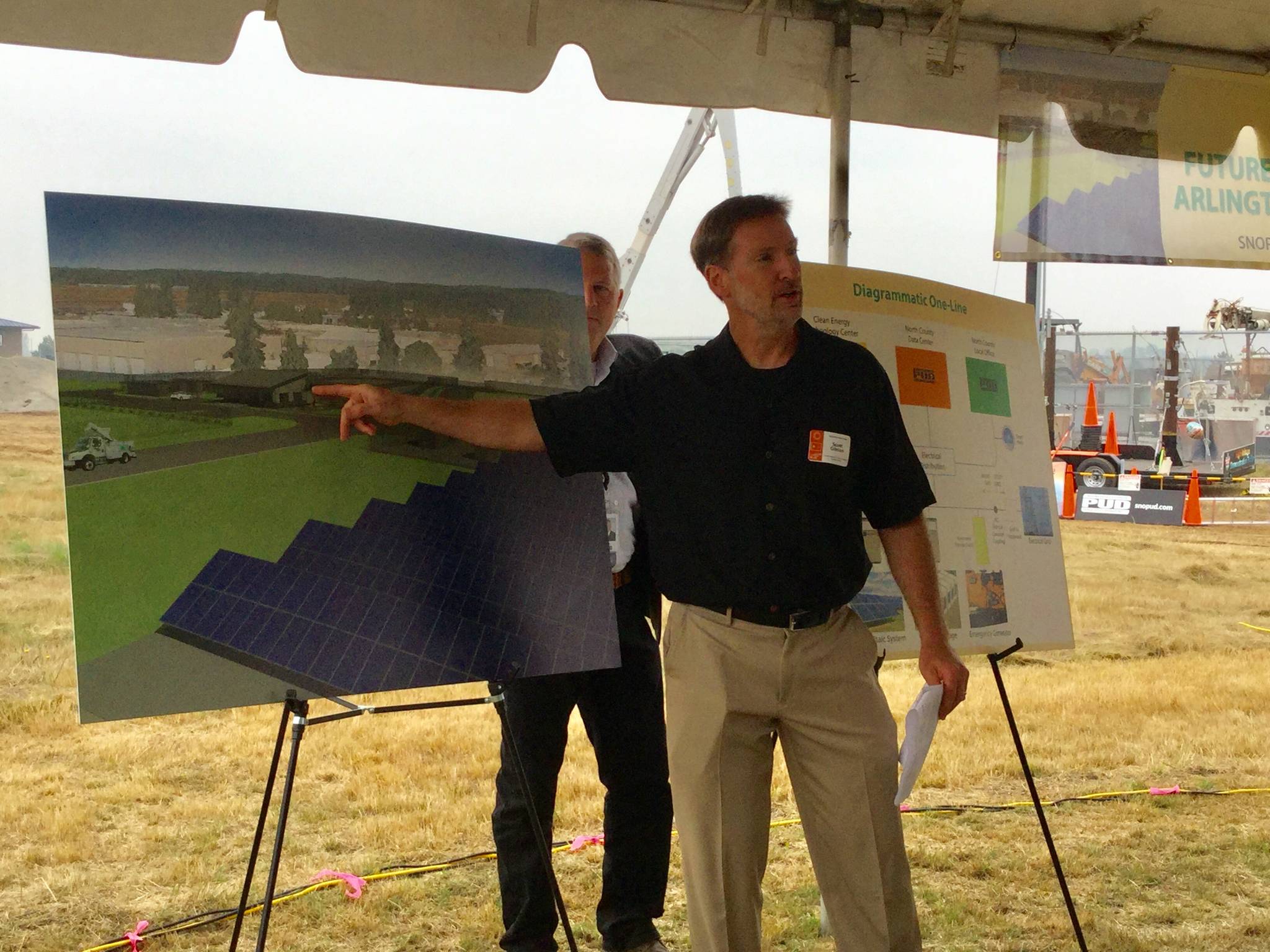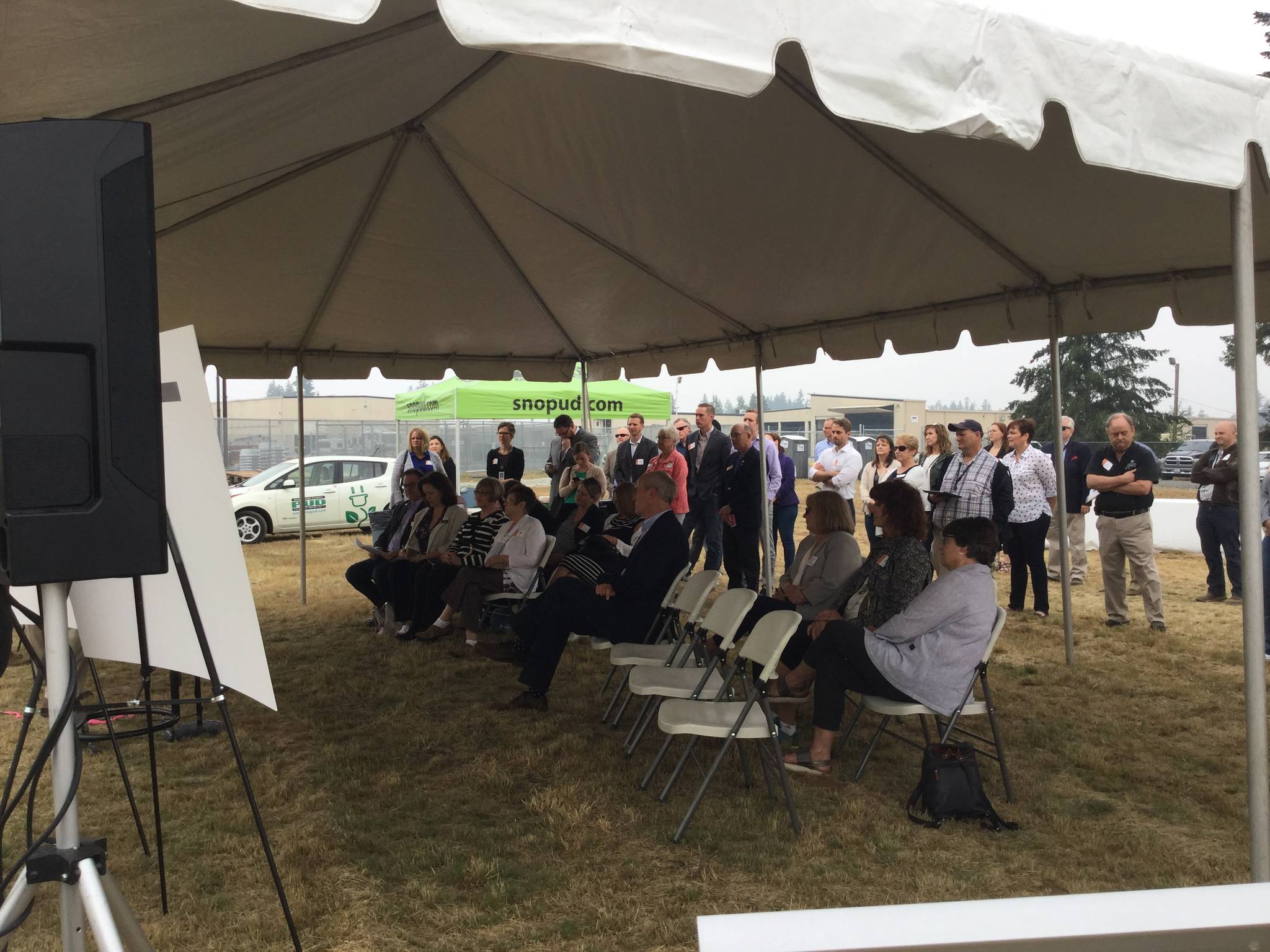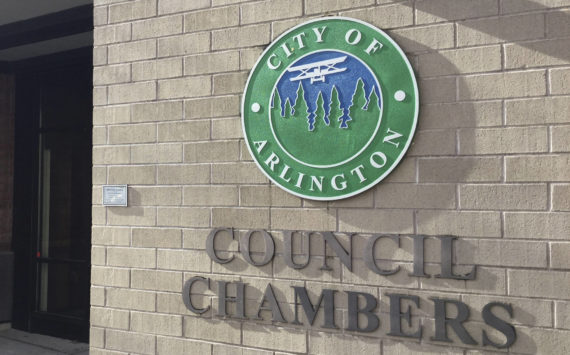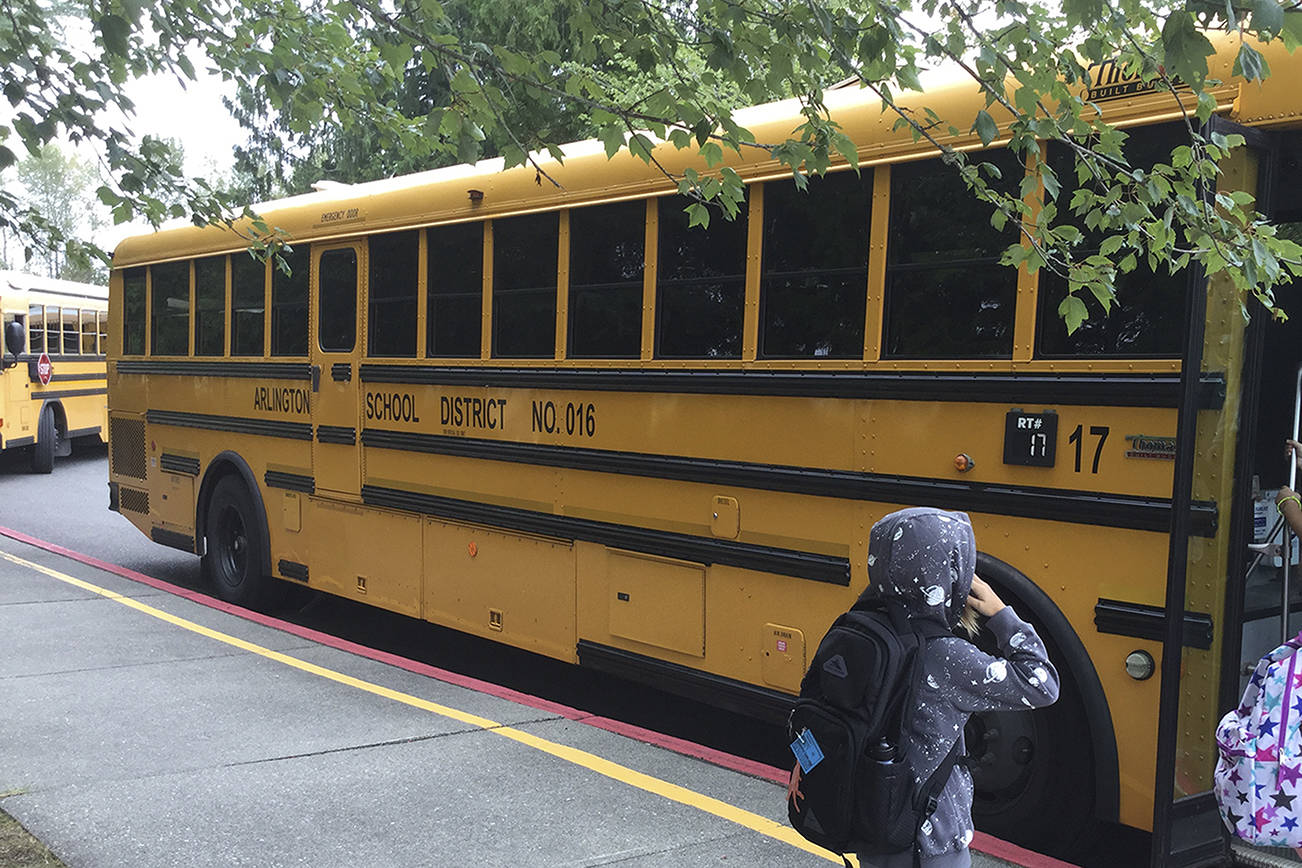ARLINGTON – For all that Congressman Rick Larsen’s father Dick knew about power as a 30-year worker with Snohomish County PUD, the terms “microgrid” or “energy storage” would have never entered the conversation, not even after he retired in 1995.
“That wasn’t what public utility districts were about,” said Rick at a groundbreaking for the Arlington Microgrid and Clean Energy Technology Center attended by dignitaries, staff and others Monday.
The focus in the 1960s was on running power underground. Today, the bright ideas are back above the surface and out in the sunlight to harness renewable energy and emerging power technologies for the next generation, which will be on display at the new PUD center.
“Northwestern Washington itself, our region, is a hub for renewable energy, and this center will build on that success,” Larsen said.
The $9.5 million project funded in part through a $3.5 million Washington Clean Energy Fund grant from the Department of Commerce includes a multi-acre segment that would cover the ground with a 500-kilowatt array of 1,800 solar panels tied in with a proposed community solar program, the state’s largest. The array will generate the hugest volume of solar energy in the PUD’s service area.
The complex on 25 acres east of the Arlington Airport at 17601 59th Ave. NE will also feature a vehicle-to-grid charging station for the utility’s electric fleet, battery storage, a substation and backup data center, and later an office and training center.
A microgrid is a self-contained, small island of electric power generation, storage and distribution inside an existing power grid such as PUD’s, which can keep operating independently even when the larger utility goes down, project manager Scott Gibson said.
The combined feature will form a microgrid, a system that can run independently from the electrical grid. The microgrid will also be available to support critical facilities in the event of outages in the PUD’s system, or as an emergency operations center in the event of an earthquake, wind or ice storm. An emergency generator system will still be ready to charge up the battery, just in case that temblor or other event strikes during, for example, a sunless day in December.
“Microgrids are nothing new; they have been around for a long time, but the way ours is unique is that instead of fossil fuel-based generation like gas or propane, we’re going to use a solar array,” Gibson said.
Pairing the solar-generated power with a 1-megawatt hour battery the size of two freight containers will be the backbone of their system.
The microgrid’s focus is grid resiliency and disaster recovery, benefitting PUD’s north end customers from Marysville to the Stillaguamish Valley, to Camano Island.
Gibson spoke about the unique vehicle-to-grid system. PUD plans to use batteries from the district’s electric fleet – such as the Nissan Leaf – which will be able to be charged, or discharge power back into storage.
“There are only a handful of these projects in the U.S. and worldwide,” Gibson said. “There is a growing number of these electric vehicles that can actually be used to benefit the grid in the future. That’s the generation side.”
Gibson said PUD is negotiating a contract with Mitsubishi to work on the V2G proposal through cost-sharing.
The microgrid project was designed by Kansas City-based Burns and McDonnell. Hewitt Architects in Everett is designing the technology center and other buildings, and Burlington contractor Interwest Construction is under way on the first phase of the project to clear the property and install infrastructure.
The Clean Energy Technology Center will be used to showcase microgrid technology, PUD District 1 commissioner Sid Logan said.
“The center will provide educational opportunities for the business sector, energy industry researchers, local agencies and public schools,” he said.
Gibson added the PUD will have picnic tables set up around a “little solar tree” – or pole with small solar panels coming out of it, where kids can plug in their phones and other devices while learning about the utility’s clean technologies and how they can reduce society’s carbon footprint.
The PUD will use the microgrid’s solar array for a Community Solar program to be launched by June 2019. Logan said the the program would be open to all customers, even those who live in shade or rent, giving them the option to own a “shares” of a solar panel through a subscription process.
The program will be supported through the Washington State Production Incentive Program. Customers after cost recovery on the solar panel array would start to see monetary benefits on their monthly bill.
According to the Solar Energy Industries Association, 12,000 homes in Washington are powered by solar energy, and the industry supports 3,600 jobs in the state.
Larsen’s 2nd congressional district is home to 18 companies that install and manufacture solar materials.
Congress added $232 million more in the 2018 federal budget package for energy efficiency and renewable energy projects, and $33 million more for solar energy, with hopes to increase funding for energy storage research and development, Larsen said.
Logan, an Arlington resident, mentioned that beyond the microgrid project, the PUD has invested tens of millions of dollars in other projects serving the area including improvements to high-voltage lines and substations serving east Arlington and Oso, as well as the Arlington-Marysville Manufacturing Industrial Center.
Arlington Mayor Barb Tolbert was impressed by the community solar program and its potential to let everyone participate, as well as the education that will flow at the Clean Energy Technology Center.
“It will be wonderful for kids to see and experience when they come out to the center and actually plug their phones in, so they connect with what the technology really is doing,” she said.
Tolbert also tied in how the technology can be used toward better building and clean construction and materials as Arlington, Marysville and the county move forward with the region’s Manufacturing and Industrial Center.
State Rep. Carolyn Eslick, a 39th District Republican from Sultan, said the project will generate new jobs.
“I love that the project is in Arlington because they are out there in front of most other cities,” Eslick said. “This is just a prime example of the innovative types of projects they have going on here.”
PUD officials said the project is anticipated for completion in 2019-20.
